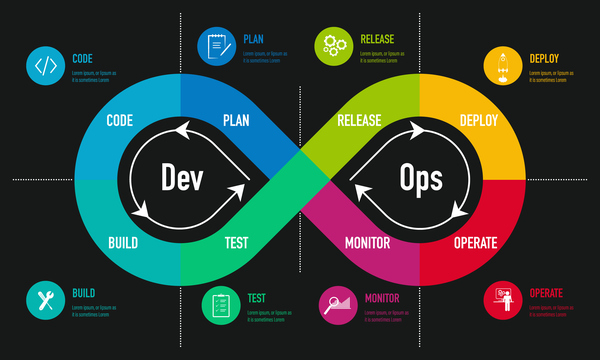DevOps Services

DevOps is about removing the barriers between traditionally siloed teams, development and operations. Under a DevOps model, development and operations teams work together across the entire software application life cycle, from development and test through deployment to operations.
Traditional security operates from the position that once a system has been designed, its security defects can then be determined and corrected before release. With the change to a DevOps model, traditional security practices occur too late in the development cycle and are too slow for the design and release of software built by iteration. Thus, they can become a major roadblock to delivering applications and services at speed.
Moving to DevOps and DevSecOps is not a destination. It is a journey. DevOps is fundamentally changing how development and operations are done today. You can use the DevOps practices, process, frameworks, and workflow, based on the DevOps philosophy, to build security into your software development life cycle at speed and scale without sacrificing safety, while minimizing risks, ensuring compliance, and reducing friction and costs. DevOps and DevSecOps allow development, operations, and security teams to balance security and compliance with speed of delivery, and to build security into the full SDLC.
By capturing and analyzing logs generated by applications, DevOps teams can better understand how software changes or updates may affect users.
DevOps practices such as CI/CD let DevOps teams deliver rapidly, safely, and reliably. CI is a software development practice where developers regularly merge their code changes into a central repository, followed by automated builds and tests. The key goals of CI are to find and fix bugs quicker, improve software quality, and reduce the time it takes to validate and release new software updates. CD expands on CI by deploying all code changes to a testing or production environment after the build stage.
The microservices architecture is a design approach to build a single application as a set of small services. Each service runs in its own process and communicates with other services through a well-defined interface using a lightweight mechanism. You can use different frameworks or programming languages to write microservices and deploy them independently, as a single service, or as a group of services.
Organizations may also use a microservices architecture to make their applications more flexible and enable quicker innovation. Typically, each service is paired with a small, agile team who takes ownership of the service.
Several key practices can help organizations innovate faster through automating and streamlining the software development management process. One fundamental DevOps practice is to perform very frequent but small updates. These updates are usually more incremental than the updates performed under traditional release practices. Organizations using a DevOps model deploy updates much more often than organizations using traditional software development practices.
Communication and collaboration are keystones of the set of DevOps practices. Automation of the software delivery process establishes collaboration by physically bringing together the workflows and responsibilities of development and operations. Communication across developers, operations, and even other teams, such as marketing and sales, allows all parts of the organization to align more closely on goals and projects.
DevOps practices such as continuous integration and continuous delivery let DevOps teams deliver rapidly, safely, and reliably. Monitoring and logging help DevOps teams track the performance of applications so they can react quickly to problems.
